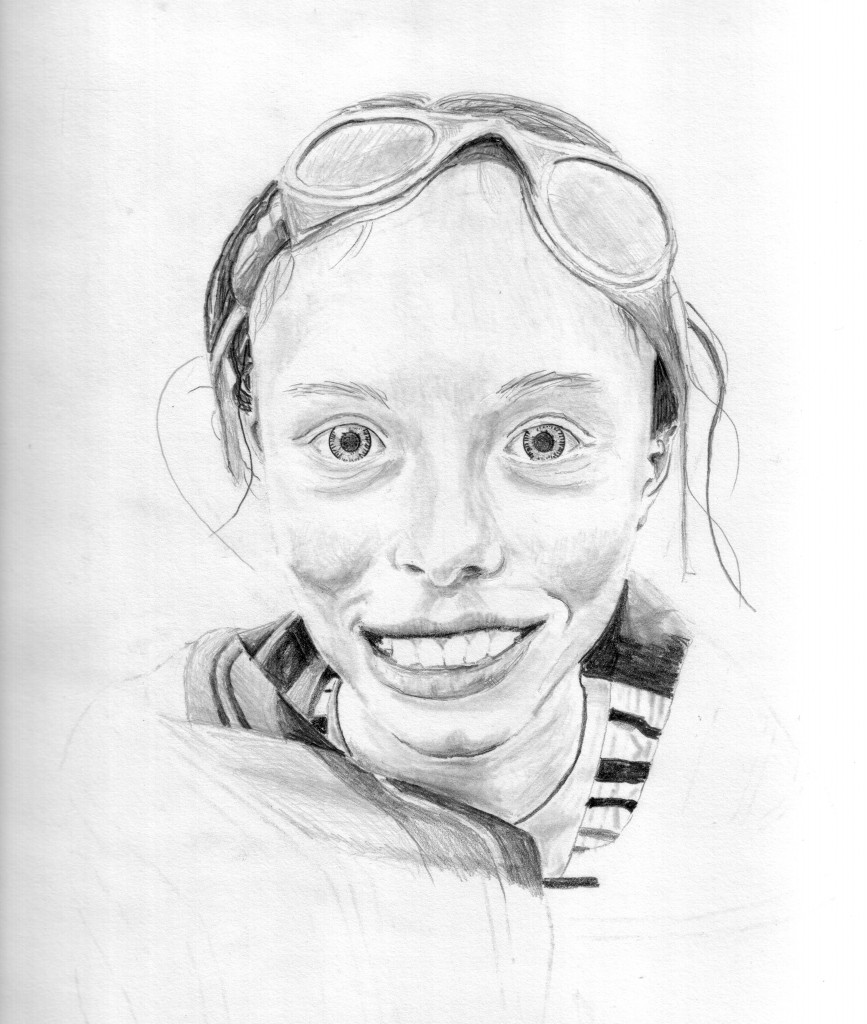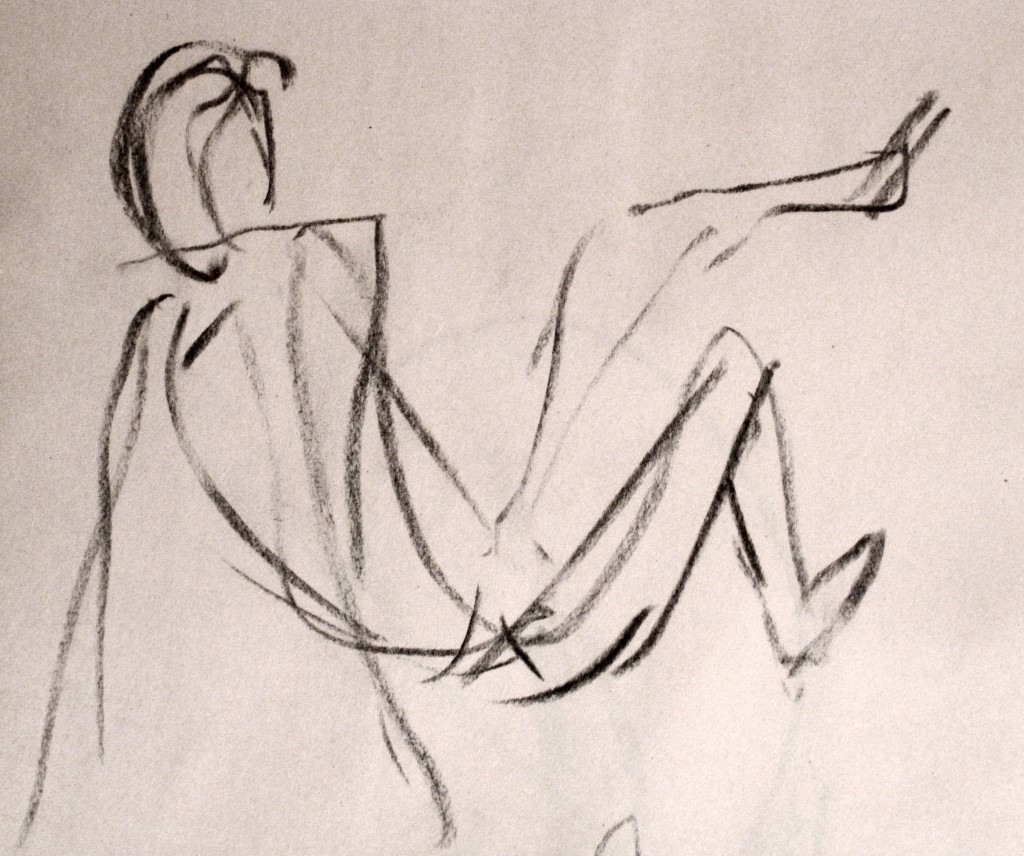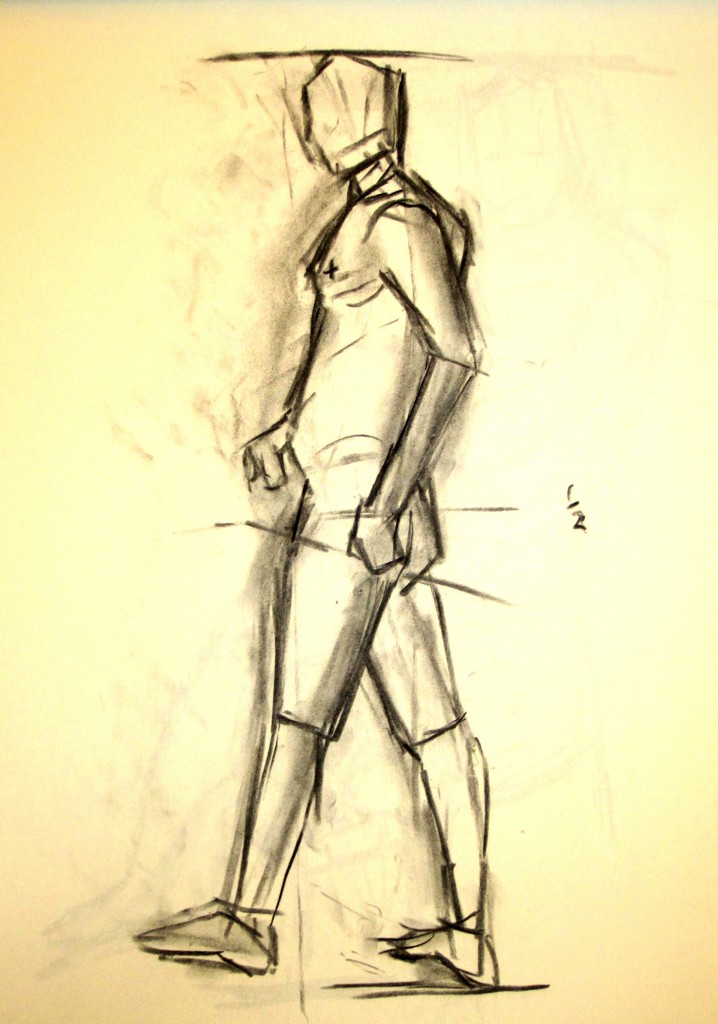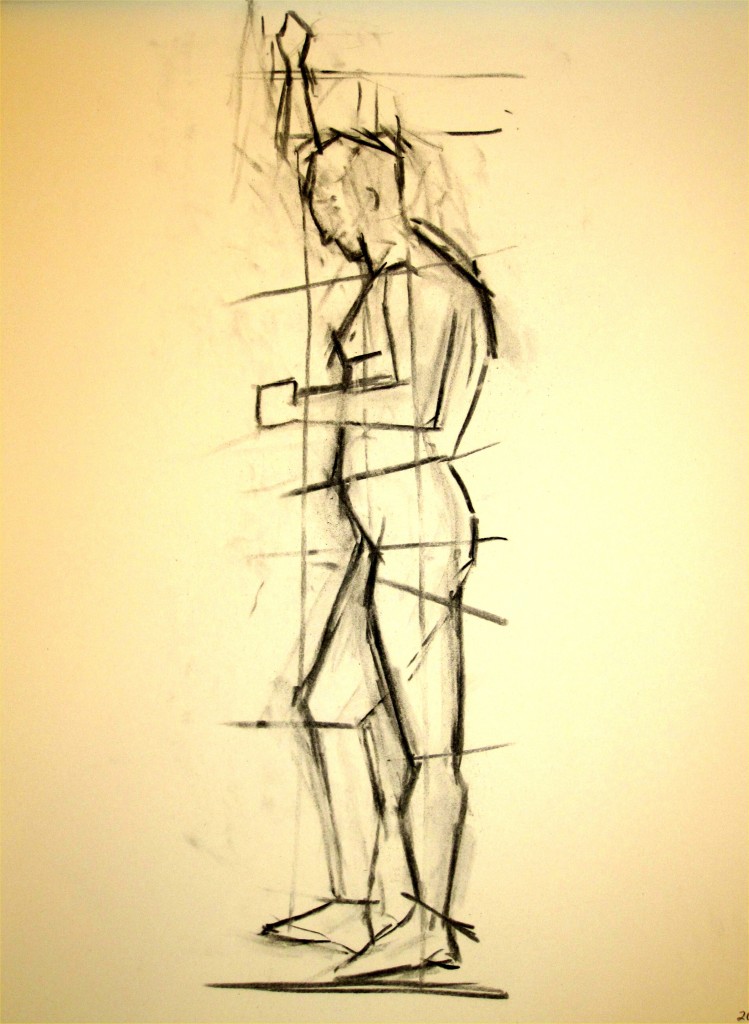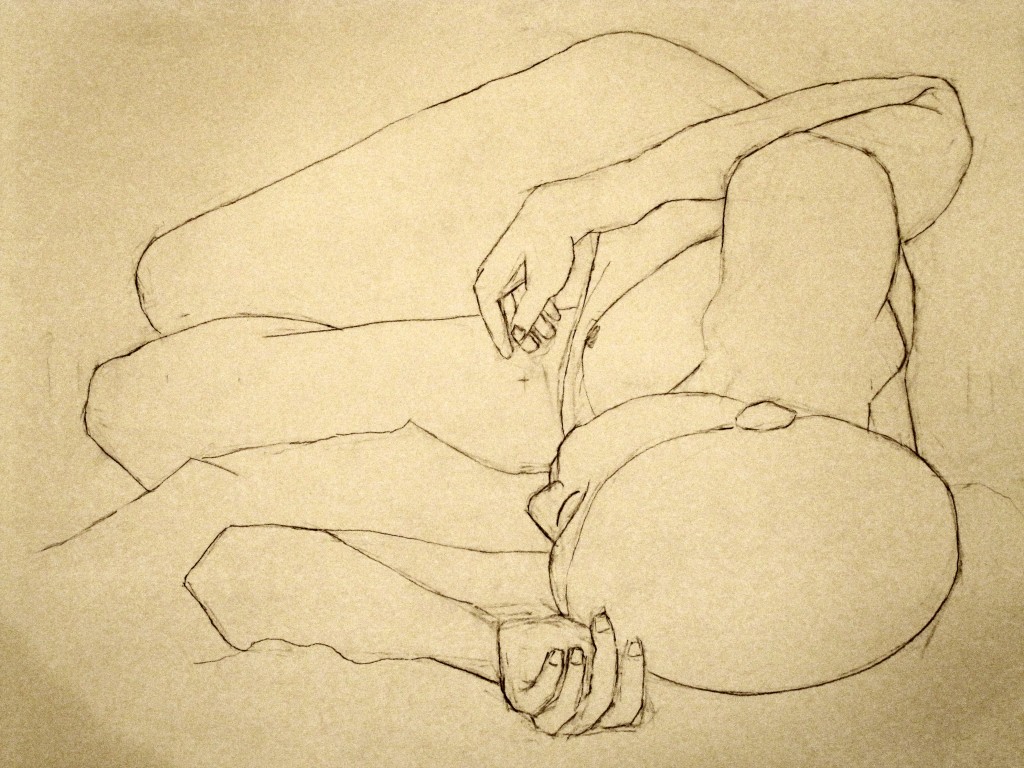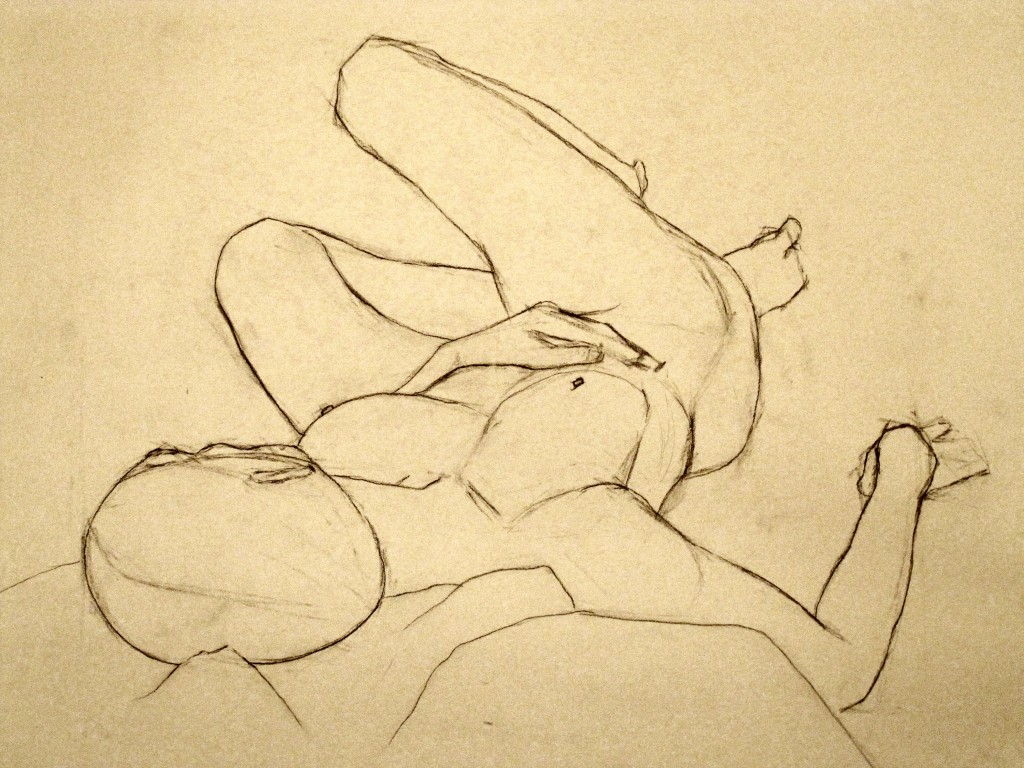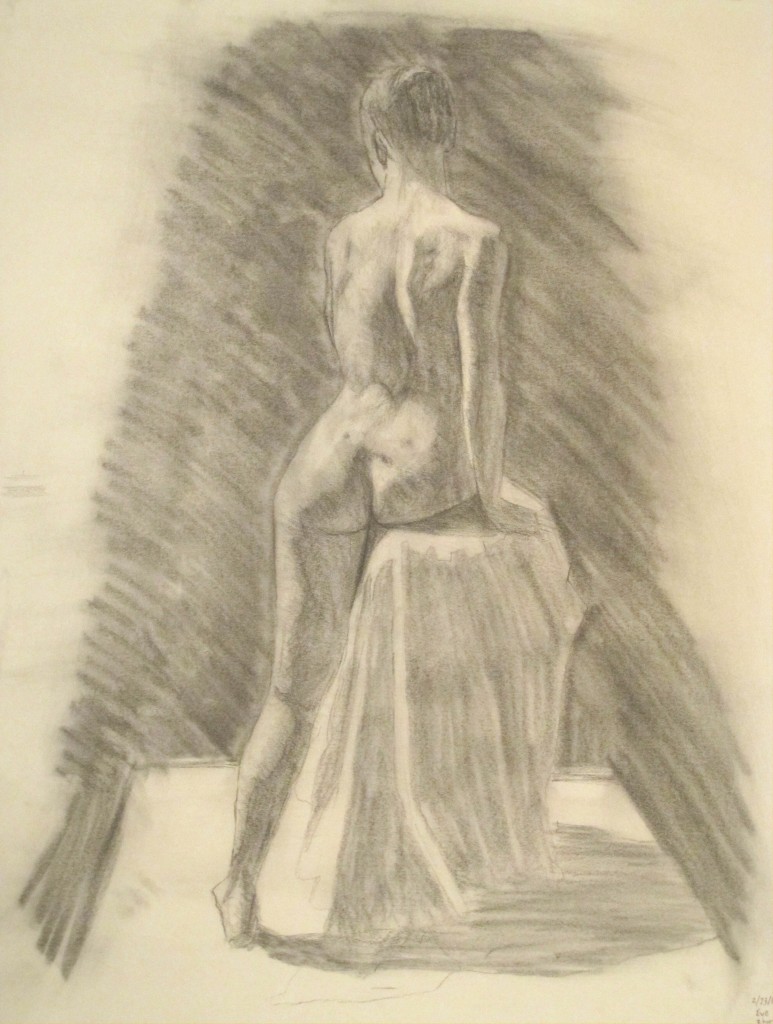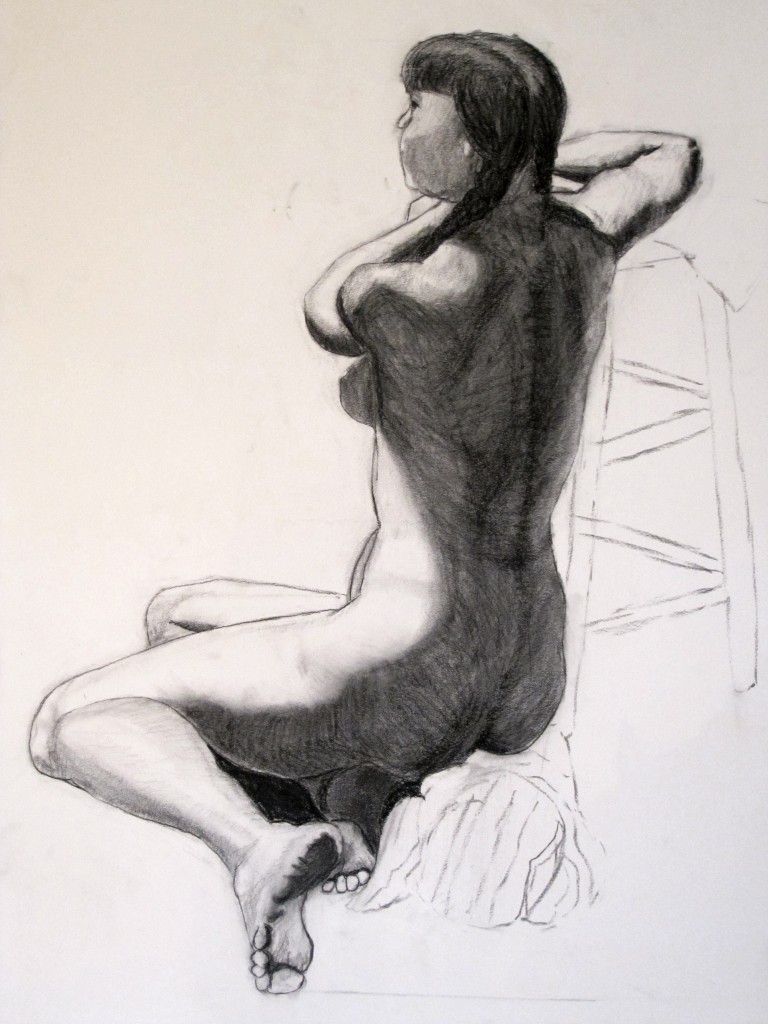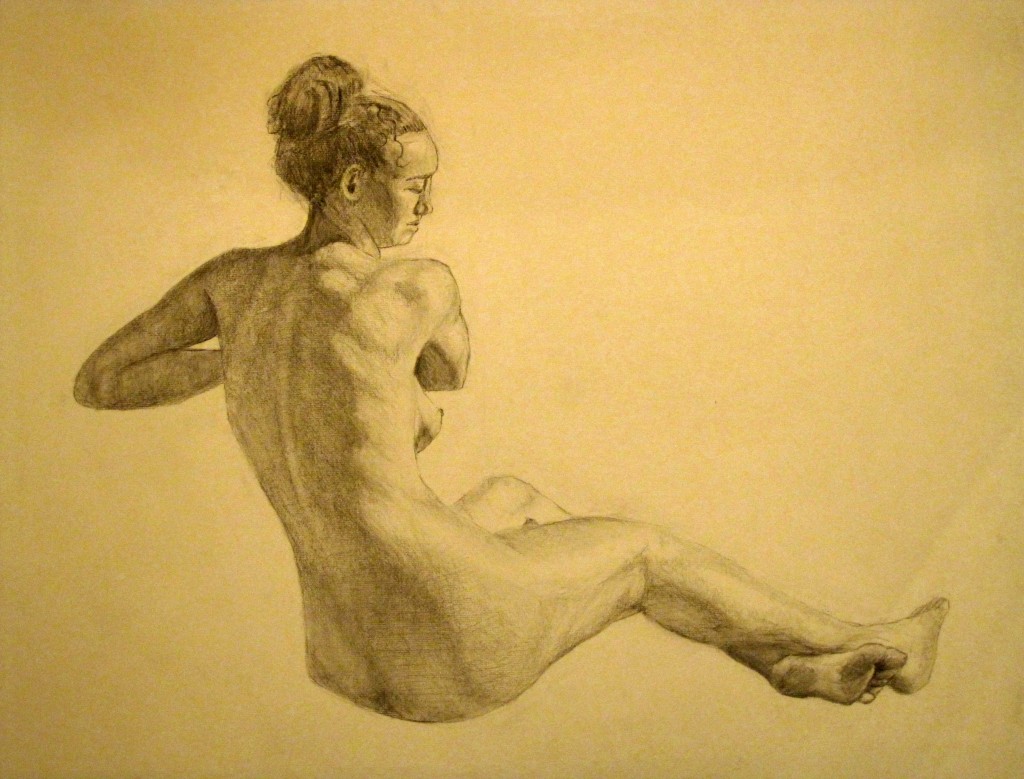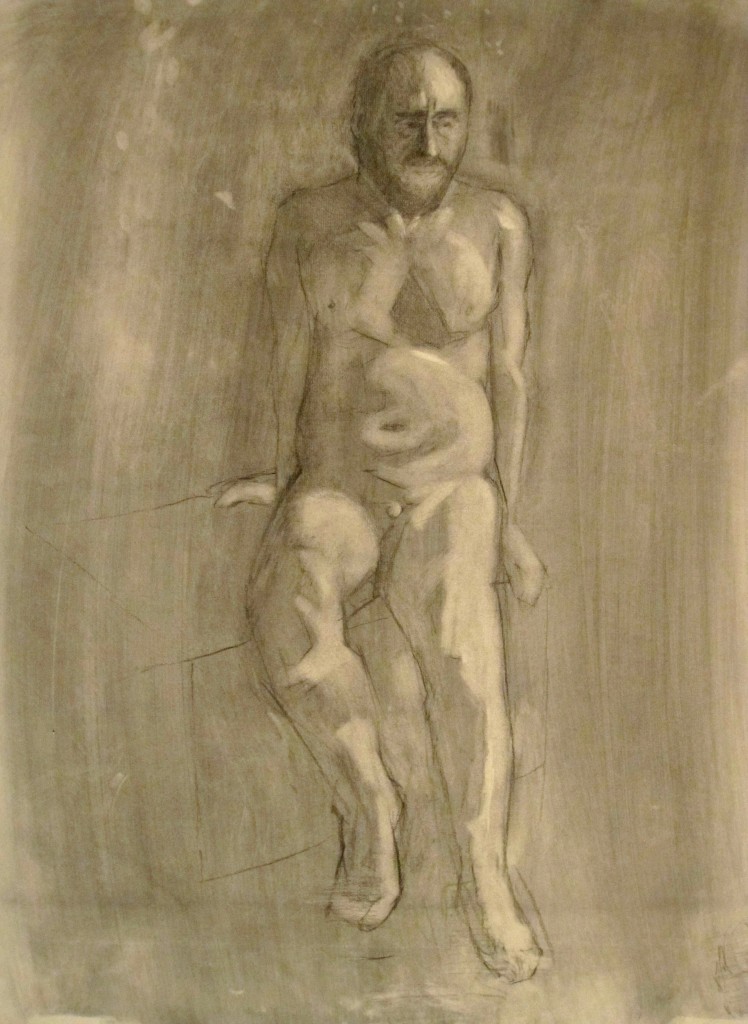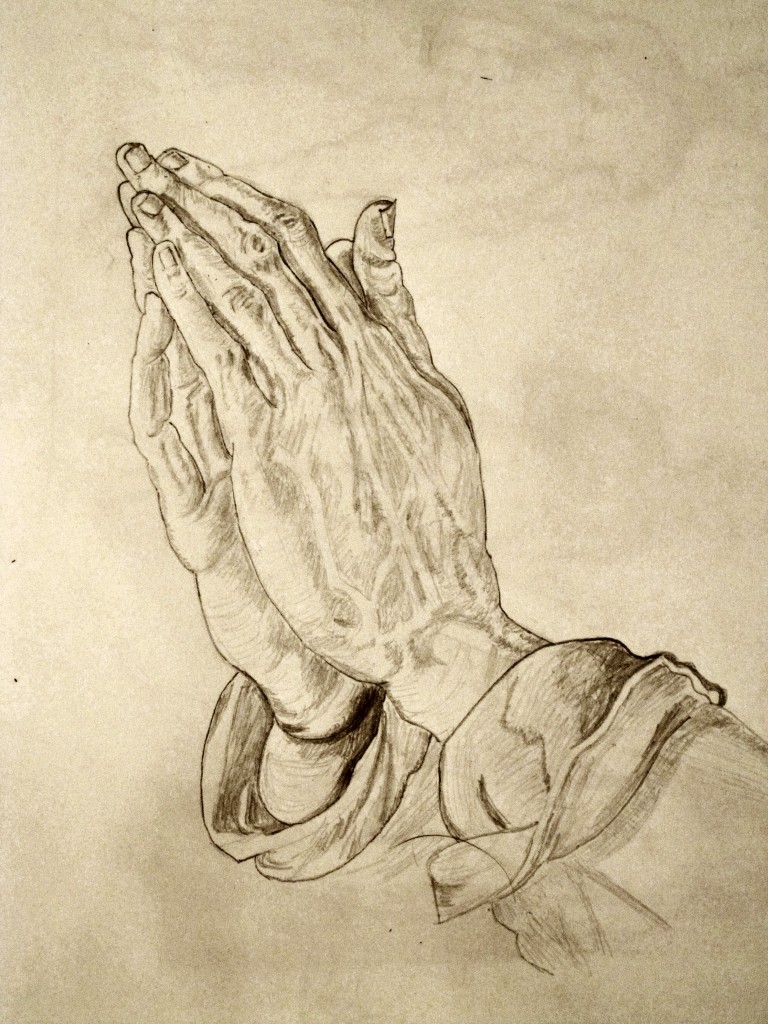Editor’s note: for the 2010 holiday season, I sent my family and friends this deck of 12 art cards telling the story of my first year at Gage Academy . . .
I hope you enjoy my mini portfolio. These drawings are a sampling from my first year of figure drawing classes at Gage Academy in Seattle. Until 2009 I hadn’t really drawn since I was a kid, but I was in good hands since the motto at Gage is that artists are made, not born – anyone can learn to draw and paint and sculpt.
Gage is at the forefront of the revival of classical realism and their program follows a traditional progression with master copies, anatomy, cast drawings, drawing from life, and then monochromatic painting, and eventually color.
I find the act of drawing itself to be very fulfilling and while I like my finished pieces, I enjoy the process of creating them just as much. This level of enjoyment came as a surprise when I found art and it was transformative.
When I was younger I was more results oriented, the process didn’t mean as much to me. I couldn’t imagine – let alone appreciate – the meditative and intense process that brings an image bit by bit out of a space inside my mind that lies just behind my eyes.
These days I am satisfied with the journey and am thrilled to know that I could entertain myself for the rest of my years just studying and making art and still have many lifetimes more to learn.
Be sure to check out the notes on the back of each drawing.
This is a pencil drawing of my daughter. In the summer of 2009, before discovering Gage Academy, I found an excellent book on drawing faces. It was actually written by a police sketch artist who teaches investigators and detectives how to draw. I followed her techniques and ended up with this drawing which inspired me to enroll in a class at Gage. This is the only drawing in this set that is based on a photograph. All of the other drawings are from life.
My first figure drawing course began with two weeks of “Gestural Boot Camp”. For each of the first four sessions, we spent three hours doing very brief gestural drawings with vine charcoal, starting at 30 seconds and working our way up to about two minutes. I filled a couple of pads of newsprint with simple drawings and my hand was sore at the end. I’m not naturally inclined towards gestural drawing, but I find that I get better the more I practice.
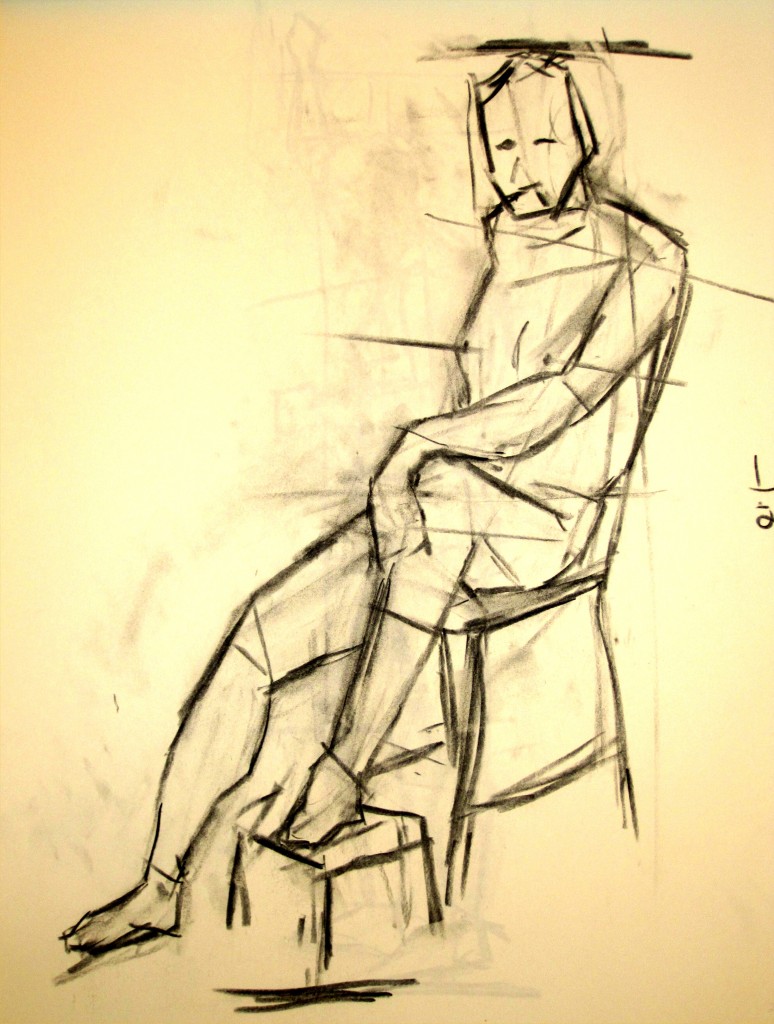 This is the first drawing where things really clicked for me with a block in. Earlier attempts all had too much detail and I didn’t understand the idea behind simplifying the basic forms. When I saw how this picture rang true with just a few lines, things just fell into place. Afterwards I began to slow down and really try to build a solid foundation in each drawing before adding more detail.
This is the first drawing where things really clicked for me with a block in. Earlier attempts all had too much detail and I didn’t understand the idea behind simplifying the basic forms. When I saw how this picture rang true with just a few lines, things just fell into place. Afterwards I began to slow down and really try to build a solid foundation in each drawing before adding more detail.
Another block in from the same day as the seated man. My instructor encouraged me to always mark the top, bottom and halfway point before starting the drawing and then stick to those marks. He also felt it was important that the drawings fill the entire 20×24 page.
Another block in from the same day as the seated man. These block ins took 20 minutes each with vine charcoal.
I really like this line drawing. It was during my second semester and over the weeks we had been repeating the progression from gestural to block in to form defining lines. The course met in the afternoons on Tuesdays and Thursdays, but I had worked out an arrangement with my instructor to attend Tuesday afternoon and a repeat session Tuesday evening. I would sit for lecture and draw for 3 hours in the afternoon, then take a break for dinner and then repeat the same lecture and draw for 3 hours in the evening. I thought that I would be really tired in the evening and that my work would suffer, but actually I was much more relaxed and always did my best work in the evening.
This foreshortened line drawing was done the same evening as the other one. Each drawing took about an hour and a quarter. I started with a quick gestural in vine, then a block in, and finally laid in form defining lines in compressed charcoal.
This is another evening session drawing after a long afternoon of drawing and a break for dinner. Somehow I just do better in the evening when I am more relaxed.
This is my first three-hour drawing. It was from an open studio session outside of class and at this point I had never spent more than about 30 minutes on one pose. When first I started drawing I couldn’t imagine how someone could spend three hours on a single drawing so I was a bit apprehensive about how I’d use the time in the session. I figured I might move my easel a couple of times and do a few drawings, but in the end I actually filled all of the time and wish I had more. I had just finished blocking shadows and was starting to turn form when I ran out of time. We hadn’t covered shading at this point in class, so I sort of winged it and used compressed charcoal, rather than the vine I had been using for the block in.
In January of 2010 I did a week long workshop with Juliette Aristides. We did five different 3 hour poses in the mornings and one 12 hour pose spread across four afternoons. This drawing was from the afternoon pose and I probably spent about seven or eight hours refining the block in and the shadow block in before doing any shading. One thing I really learned in the workshop is that time invested early on in the block in almost always pays off, whereas time spent later will never improve a drawing that has structural flaws.
This drawing is also from the Aristides workshop, but it used a different, more painterly technique, where I started with paper that had been toned with charcoal dust and then wiped away the light areas. This approach is fun because the lights and darks really give you a good illusion of form while you are still in the block in stage.
I spent about 3 hours on this drawing. It’s done entirely in vine charcoal.
Late at night when the house is quiet, I like to relax in my favorite chair with a vodka cranberry and a sketch pad. The cool of the night is a great time for master copies. This one is after the great German draftsman Albrecht Dürer. My version took about two hours and I used a graphite pencil. Dürer did his on toned paper with white chalk for the highlights. One day I’d like to redo my copy in a similar manner, but first I have to get better with chalk.

